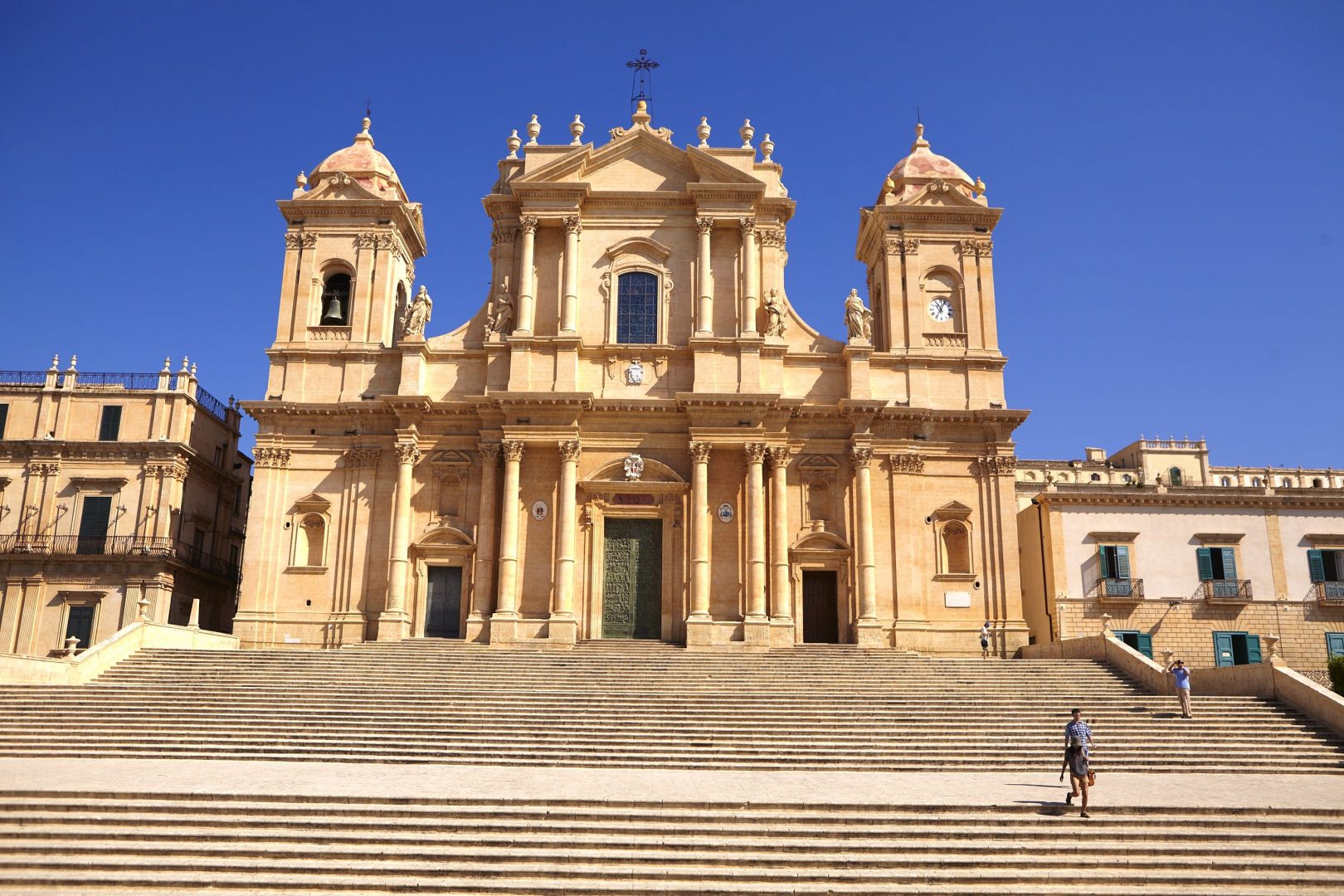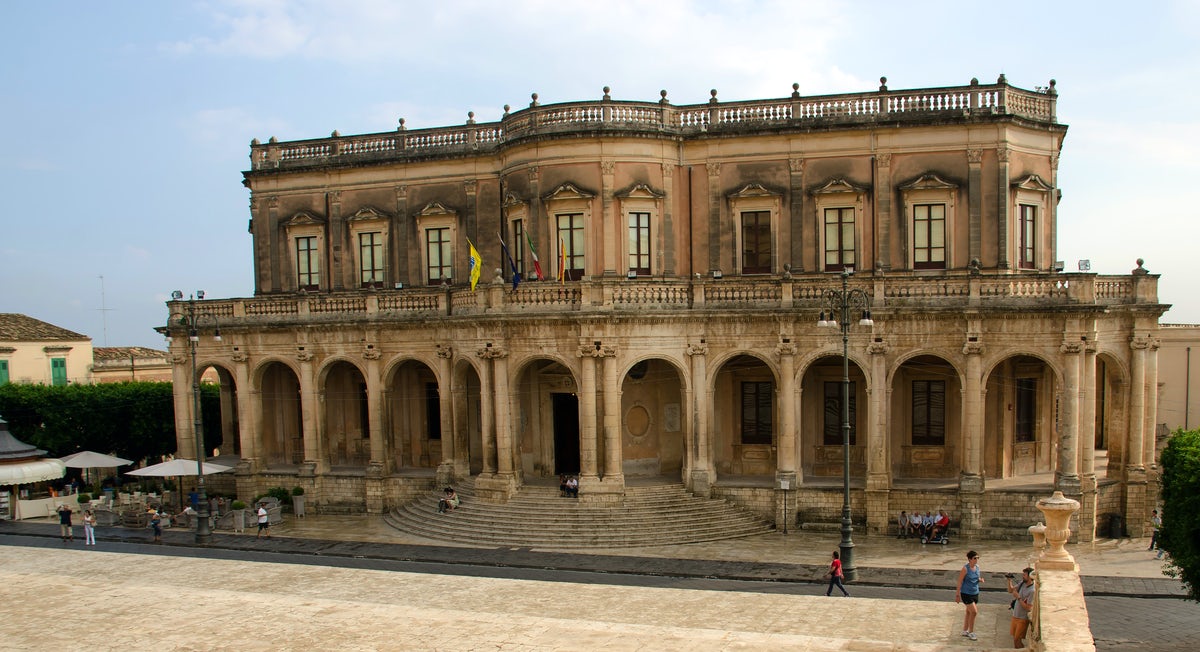Noto is a city in southeastern Sicily, Italy. It is known for its Baroque architecture.
Noto is a city in southeastern Sicily, Italy. It is known for its Baroque architecture, including the remodeled 18th-century Noto Cathedral. Opposite the street is the Palazzo Ducezio, now the town hall, with its Hall of Mirrors decorated with gold plating and marble. Within walking distance, the Palazzo Nicolaci features richly decorated balconies. Resembling a triumphal arch, the 19th-century Door Real marks the entrance to the city.
1. Noto Cathedral

Noto Cathedral is a Roman Catholic cathedral in Noto in Sicily, Italy. Its construction, in the style of the Sicilian Baroque, began in the early 18th century and was completed in 1776. It is dedicated to Saint Nicholas of Myra and has been the cathedral of the Diocese of Noto since the diocese’s establishment in 1844. The cathedral dome collapsed in 1996 as a result of unremedied structural weakening caused by an earthquake in 1990, to which injudicious building alterations in the 1950s may have contributed. It has since been rebuilt and was reopened in 2007.
2. Palazzo Ducezio

It is the seat of the Municipio and it is situated in front of Cathedral to signify the connection between the two powers; that of the state, and that of the church. Its moderate height, and the magnificence of the cathedral which towers over it, make it appear modest in dimension. The palace was built on a plan by architect Vincenzo Sinatra, who worked on it for more than ten years. The original plan was of one floor and was inspired by French architecture as for the semi-circular entrance, the narrow corners, the oval reception-hall, and the central dome. In 1950, another floor was added and this altered the original plan. Nevertheless, the building retains a certain uniformity and fits perfectly into the surroundings
3. Palazzo Nicolaci

The fantastical facade of this 18th-century palace wows with its wrought-iron balconies, supported by a swirling pantomime of grotesque figures. Inside, the richly brocaded walls and frescoed ceilings offer an idea of the sumptuous lifestyle of Sicilian nobles, as brought to life in the Giuseppe Tomasi di Lampedusa novel Il Gattopardo (The Leopard).
4. Porta Reale

The Porta Reale is the access to the historic center of Noto. It was built in 1838 with the arrival of King Ferdinand II of Bourbon in Noto, by the Marquis of Cannicarao at his own expense and designed by architect Orazio Angelici. The door in neoclassical style, has two pilasters with Corinthian capitals, inside the arch, two crests represent, on one side, the city of Noto and on the other side the coat of arms of the Cannicarao family. The material used is the typical golden limestone that was used in the construction of churches and palaces and which gives the buildings a yellowish hue. At the top of the door there are three symbolic sculptures: a crenelated tower which means power and the strength of the city; on the other side a Cirneco or greyhound a Sicilian canine breed, symbol of loyalty and at the center a Pelican that means sacrifice, or, it is also thought that it can be a stork, symbol of fertility.
5. Villa Romana del Tellaro

It is a luxurious building (6,000 square meters / 65,000 square feet) of the 4th century A.D., decorated with extremely refined mosaics on the floor, and on whose ruins a farmhouse was built in the Baroque period. Even if, measured in terms of the amount of surface covered by mosaics, Noto’s building cannot compete with that of the better known villa in Piazza Armerina (only four rooms survive), the artistic quality of the mosaics is comparable, that is to say very high.
